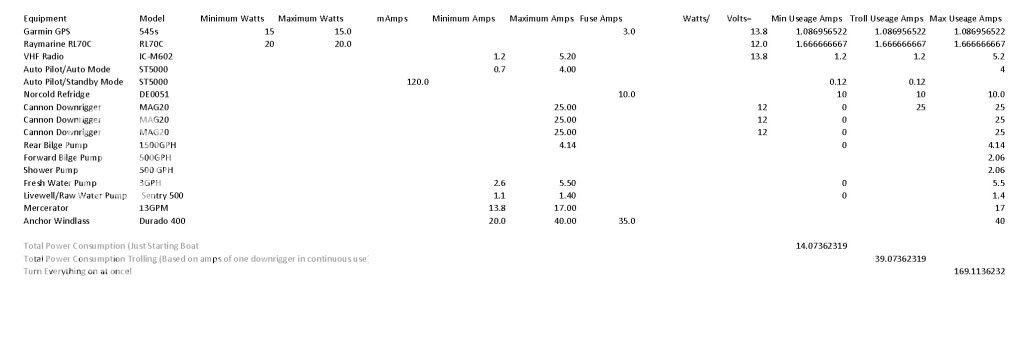I have 5 voltmeters (3 analog and 2 digital) and I am not yet convinced anyone can really tell the current state of a battery using a voltmeter! When I am anchored, I have ran my house bank down to as low as 9.5 volts. Which is enough power to run my lights and a radio and that is about it! My inverter takes a minimum of 10 volts and it won't run an electric coffee pot, when the batteries are that low even with the engines running. The coffee pot pulls 15 amps!

BTW... the digital voltmeters are far superior to the analog, as the digitals will show volts in tenths, which if you are attempting to rely on a reading for the state of your battery system is very important!
Now, to calculate the remaining power stored in a battery, you would have to start with what total capacity rating of the battery system is supposed to be, then subtract the power used and add that back in the charging capacity. That would give you an approximate idea of the power stored... and this is a very crude way. The batteries not being charged will draw down in a non-linear way, so the battery power curves would be needed to correctly approximate the stored charge!
Voltage is a good indicator of battery condition while the battery is either not being used or is being used, but toss in a charging system and all the voltage meter will tell, is the effect of the charging system, not the battery state. I have had batteries with open cells on a running engine with the volt and ammeter showing good, until the engine was turned off. Restart required a jump, then the engine system was up and running again, all lights working, and not any indication of any battery problems.
Putting this another way, using just a battery and no charging system in the circuit. The loads (lights, radios, downriggers, etc.) will control the current flow drawn off the battery. As the battery capacity drops, so will its voltage and the voltmeter will surely tell that. A voltmeter will indeed show the battery is charged and volts remaining; however, one needs to remember that a voltmeter showing 12.6 volts indicates the battery is fully charged and a showing of 12.2 volts represents a 50 percent discharge and is the effective lower limit for a lead acid battery. Also, if an electronic starting system is involved, anything under 12 volts and the engine probably will not start?
If one battery is 50% discharged it can take between 6 to 10 hours to recharge, depending on size and charging amps! [:0]




